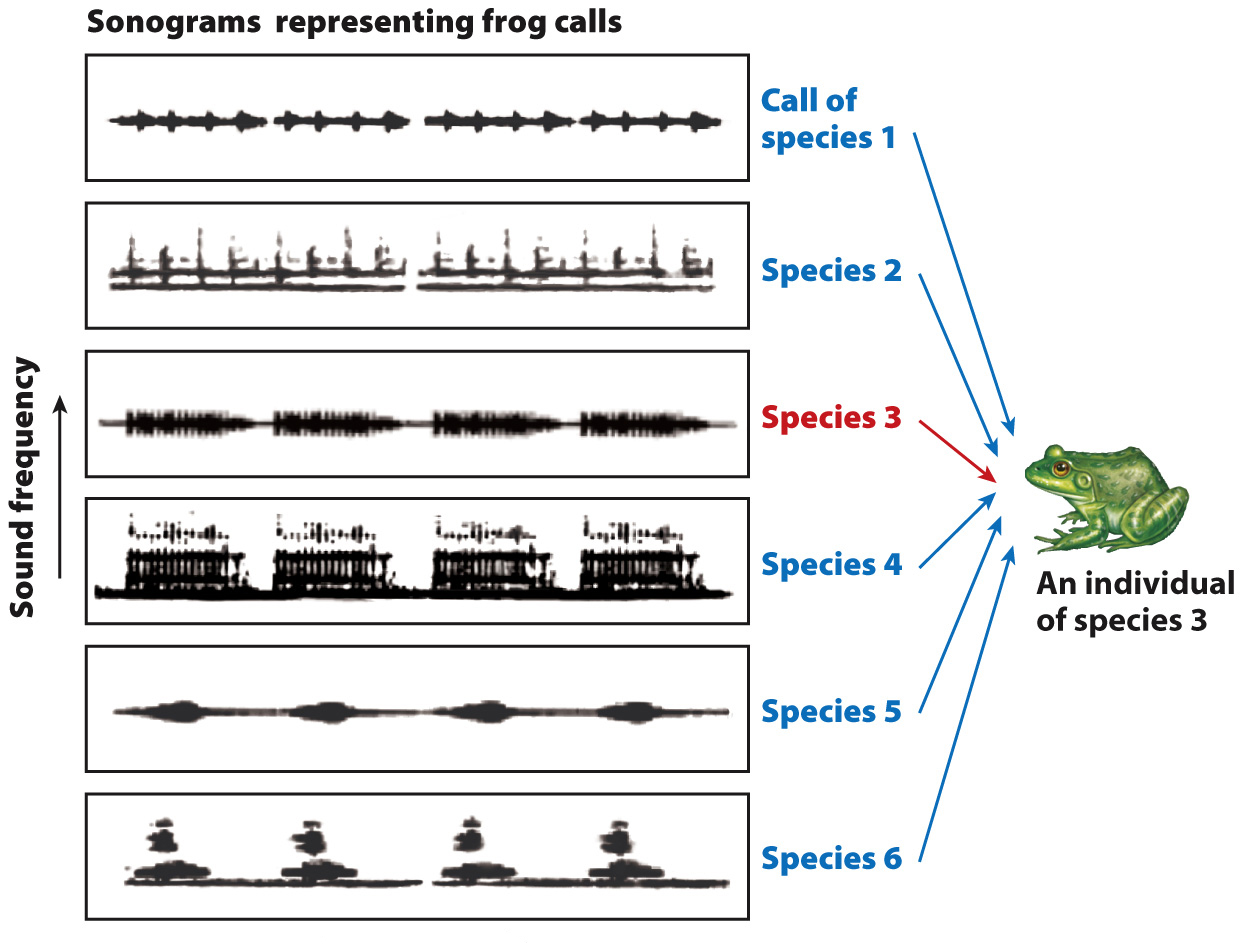The nervous system processes stimuli and evokes behaviors.
How do animals recognize the stimulus that leads to a particular behavior? In the example of the goose retrieving an egg outside its nest, how does it recognize that the object in question is sufficiently egg-like to elicit the behavior? At its root, this is an extraordinarily difficult problem. The world is full of stimuli and there are many things that look like an egg. Thus, the challenge for the animal is to filter out the correct signal (the egg) from the surrounding noise (everything else). An animal has to process many different kinds of information in three dimensions.
We know that stimulus recognition is often carried out by feature detectors, specialized sensory receptors or groups of sensory receptors that respond to important signals in the environment. Frogs provide a good example. Male frogs call to attract females and warn off other males. A single pond may contain many species of frog, each with its specific advertisement vocalization, or call. A heavily populated frog pond can be a noisy place, but it is critical to an individual frog that it be able to distinguish the call of other members of its own species from those of other species. A further complication is that different species of frog can have similar calls, often virtually indistinguishable to the human ear.
One approach to the problem of understanding how frogs recognize their species-specific call has been to experiment with recordings of frog calls. By recording frog calls, altering aspects of the call in specific ways, playing them back, and then monitoring the responses of frogs, we can identify the impact of different components of the call—pitch, duration, and pulse frequency, for example. Studies like these have demonstrated that the frog’s auditory nerves can act as a feature detector, each one “tuned” to a specific component of the call. The combination of different feature detectors stimulated by different components adds up to the recognition by the frog of a specific call, as shown in Fig. 45.4. Once the sound has been correctly identified, the appropriate behavior follows.

FIG. 45.4 A feature detector. A frog in its natural environment is subjected to a barrage of sound stimuli. Each species has a feature detector tuned to its species-specific call, allowing it to distinguish the call of its own species (red arrow) from the calls of other frogs (blue arrows).
